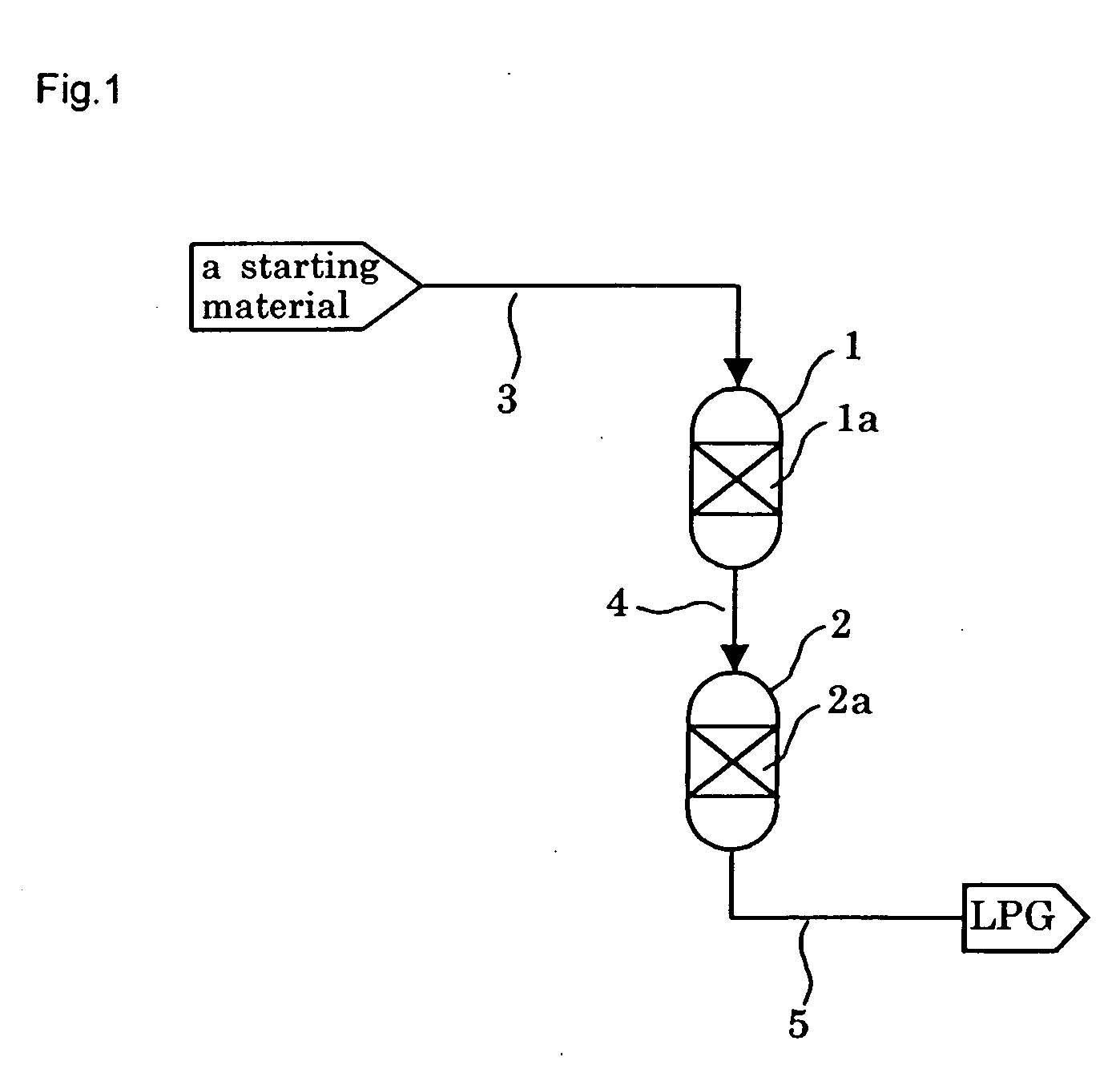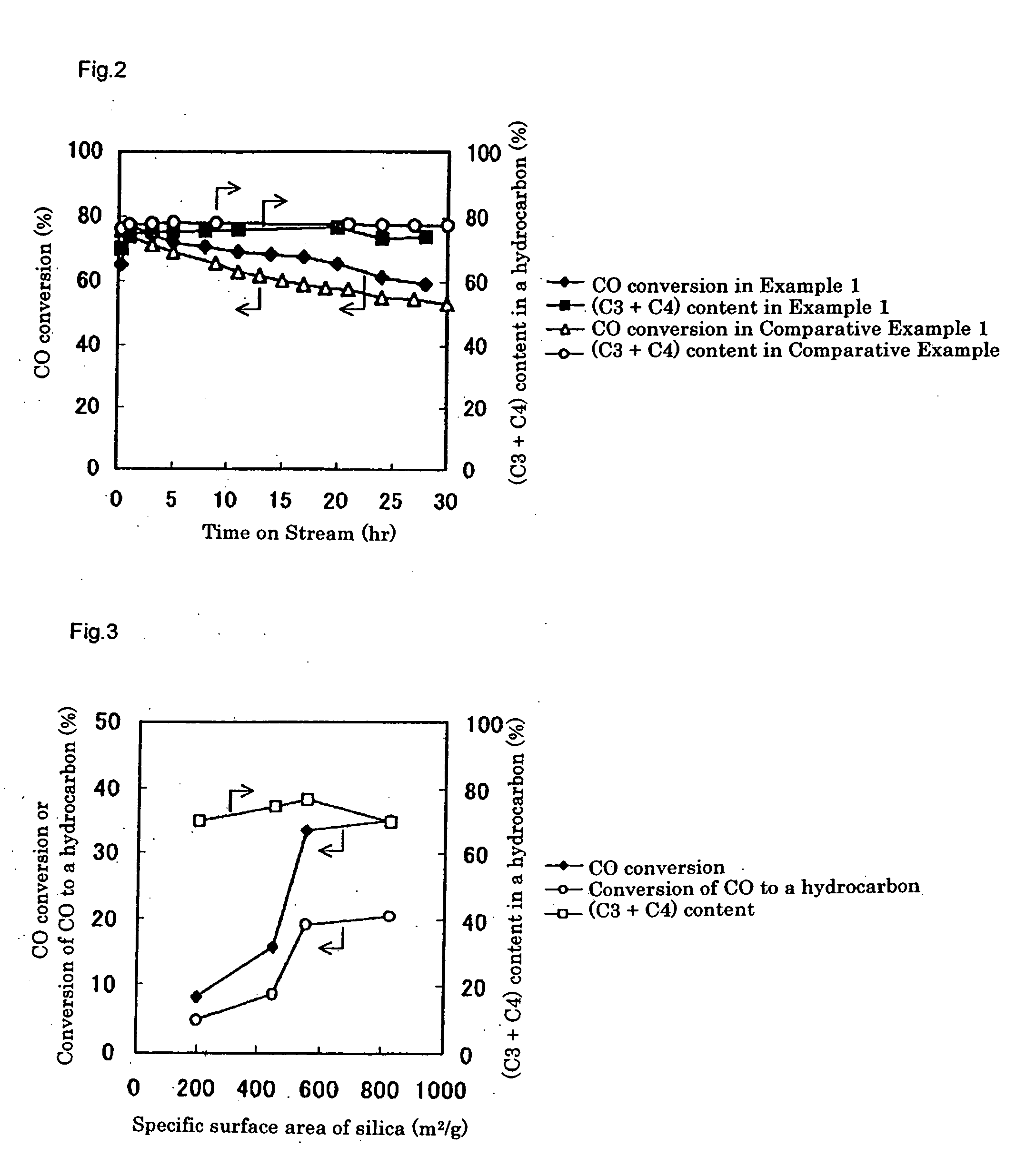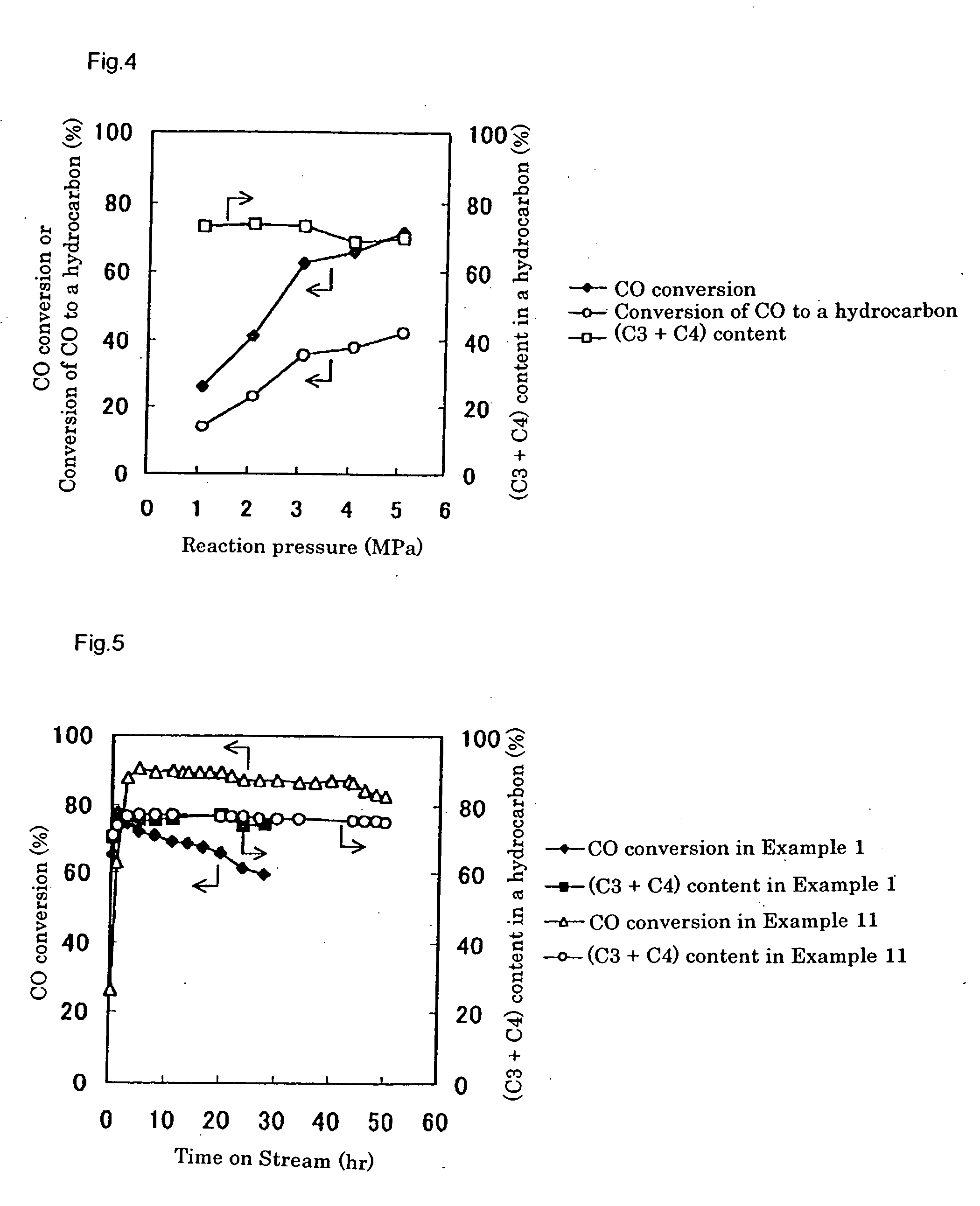Catalyst and process for LPG production
a catalyst and process technology, applied in the field of catalysts and processes for lpg production, can solve the problems of not having a sufficient catalyst life, not showing sufficient performance, not having sufficient hydrocarbon activity and yield, etc., to achieve less deterioration, high selectivity, and high activity
- Summary
- Abstract
- Description
- Claims
- Application Information
AI Technical Summary
Benefits of technology
Problems solved by technology
Method used
Image
Examples
example 1
[0196] (Preparation of a Catalyst)
[0197] A mechanically powdered catalyst in which 4 wt % of Pd and 0.75 wt % of Ca were supported on silica (Pd—Ca / SiO2; average particle size: 0.7 μm) was used as a Pd-based methanol synthesis catalyst component. The catalyst was prepared as follows.
[0198] The silica, which is a support for the Pd-based methanol synthesis catalyst component, was CARiACT G3 (trade name), produced by Fuji Silysia Chemical Ltd. The silica had a specific surface area of 820 m2 / g and an average pore size of 2.2 nm, respectively, as determined by a BET method with N2 as an adsorption gas, using ASAP2010 (Shimadzu Corporation).
[0199] The silica, which is a support, was pulverized to 20 to 40 mesh, sized and dried. And then, 8.8 mL of a 50 mg / mL aqueous solution of Pd(NO3)2(NH3)2 was added drop by drop to 20 g of the silica. After sufficiently impregnating the solution into pores, the silica was dried in a drying machine at 120° C. for 12 hours. The process of impregnati...
example 2
[0237] (Preparation of a Catalyst)
[0238] A catalyst was prepared in the same way as Example 1, except that CARiACT G3 (trade name), produced by Fuji Silysia Chemical Ltd., was used as a silica, which is a support for a Pd-based methanol synthesis catalyst component, and that the Pd-based methanol synthesis catalyst component and the β-zeolite catalyst component were mixed with Pd—Ca / SiO2: β-zeolite=1:1 (by weight). The silica had a specific surface area of 820 m2 / g and an average pore size of 2.2 nm, respectively, as determined by a BET method with N2 as an adsorption gas, using ASAP2010 (Shimadzu Corporation).
[0239] (Production of LPG)
[0240] In a tubular reactor with an inner diameter of 6 mm was placed 1 g of the catalyst prepared as above, and the catalyst was reduced under a hydrogen stream at 400° C. for 3 hours before the beginning of the reaction.
[0241] After reduction treatment of the catalyst, a starting gas consisting of 66.7 mol % of hydrogen and 33.3 mol % of carbon ...
example 3
[0243] (Preparation of a Catalyst)
[0244] A catalyst was prepared in the same way as Example 2, except that CARiACT Q3 (trade name), produced by Fuji Silysia Chemical Ltd., was used as a silica, which is a support for a Pd-based methanol synthesis catalyst component. The silica had a specific surface area of 550 m2 / g and an average pore size of 3.0 nm, respectively, as determined by a BET method with N2 as an adsorption gas, using ASAP2010 (Shimadzu Corporation).
[0245] (Production of LPG)
[0246] Using the prepared catalyst, the LPG production reaction was carried out in the same way as Example 2. Gas chromatographic analysis of the product indicated that, after three hours from the beginning of the reaction, a conversion of carbon monoxide was 33.5%, a shift reaction conversion of carbon monoxide to carbon dioxide was 14.3%, and a conversion of carbon monoxide to a hydrocarbon was 19.2%. The produced hydrocarbon gas contained propane and butane in 76.3% on the basis of carbon, whic...
PUM
| Property | Measurement | Unit |
|---|---|---|
| specific surface area | aaaaa | aaaaa |
| molar ratio | aaaaa | aaaaa |
| reaction temperature | aaaaa | aaaaa |
Abstract
Description
Claims
Application Information
 Login to View More
Login to View More - R&D
- Intellectual Property
- Life Sciences
- Materials
- Tech Scout
- Unparalleled Data Quality
- Higher Quality Content
- 60% Fewer Hallucinations
Browse by: Latest US Patents, China's latest patents, Technical Efficacy Thesaurus, Application Domain, Technology Topic, Popular Technical Reports.
© 2025 PatSnap. All rights reserved.Legal|Privacy policy|Modern Slavery Act Transparency Statement|Sitemap|About US| Contact US: help@patsnap.com



